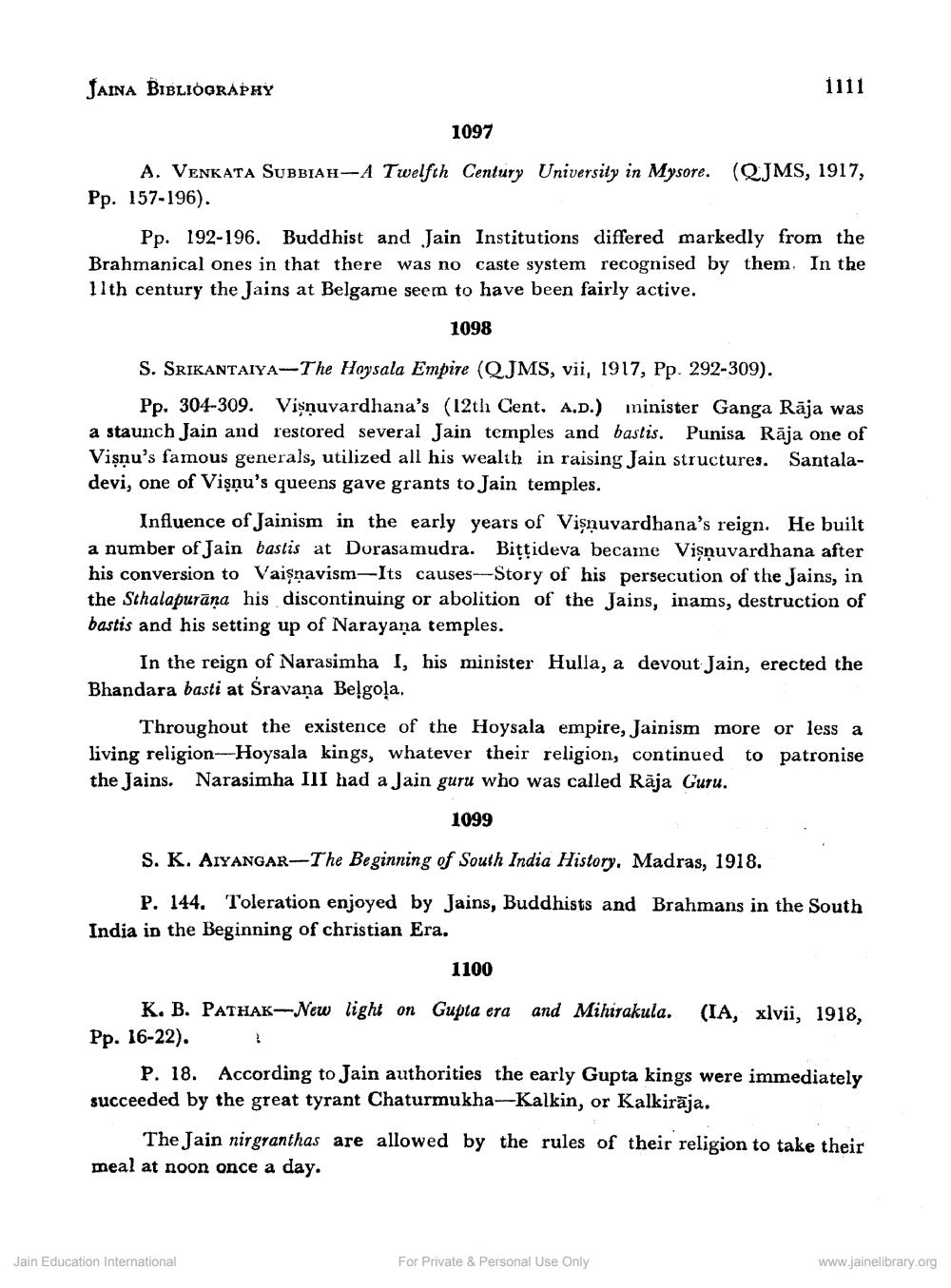________________
JAINA BIBLIOGRAPHY
1111
1097
A. VENKATA SUBBIAH-A Twelfth Century University in Mysore. (QJMS, 1917, Pp. 157-196).
Pp. 192-196. Buddhist and Jain Institutions differed markedly from the Brahmanical ones in that there was no caste system recognised by them. In the 11th century the Jains at Belgame seem to have been fairly active.
1098
S. SRIKANTAIYA-The Hoysala Empire (QJMS, vii, 1917, Pp. 292-309).
Pp. 304-309. Visnuvardhana's (12th Cent. A.D.) minister Ganga Rāja was a staunch Jain and restored several Jain temples and bastis. Punisa Rāja one of Vişnu's famous generals, utilized all his wealth in raising Jain structures. Santaladevi, one of Vişnu's queens gave grants to Jain temples.
Influence of Jainism in the early years of Vişnuvardhana's reign. He built a number of Jain bastis at Dorasamudra. Bittideva became Vişnuvardhana after his conversion to Vaişnavism-Its causes-Story of his persecution of the Jains, in the Sthalapurāna his discontinuing or abolition of the Jains, inams, destruction of bastis and his setting up of Narayaņa temples.
In the reign of Narasimha I, his minister Hulla, a devout Jain, erected the Bhandara basti at Sravana Belgoļa.
Throughout the existence of the Hoysala empire, Jainism more or less a living religion---Hoysala kings, whatever their religion, continued to patronise the Jains. Narasimha III had a Jain guru who was called Rāja Guru.
1099
S. K. AIYANGAR-The Beginning of South India History. Madras, 1918.
P. 144. Toleration enjoyed by Jains, Buddhists and Brahmans in the South India in the Beginning of christian Era.
1100
K. B. PATHAK-New light on Gupta era and Mihirakula. (IA, xlvii, 1918, Pp. 16-22). !
P. 18. According to Jain authorities the early Gupta kings were immediately succeeded by the great tyrant Chaturmukha-Kalkin, or Kalkirāja.
The Jain nirgranthas are allowed by the rules of their religion to take their meal at noon once a day.
Jain Education International
For Private & Personal Use Only
www.jainelibrary.org




